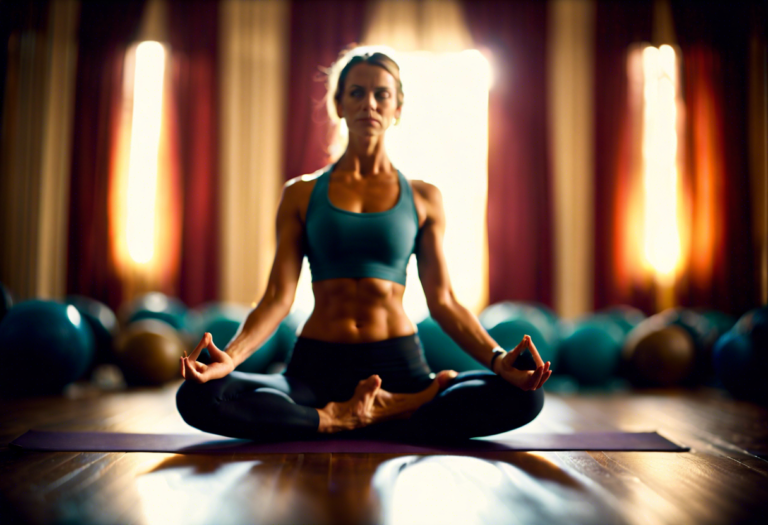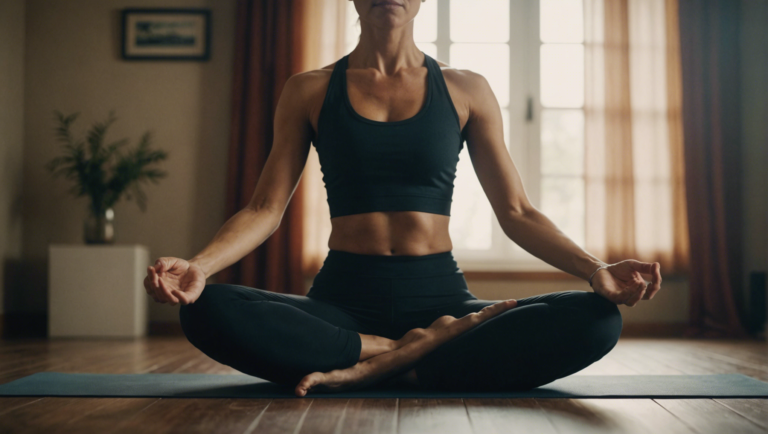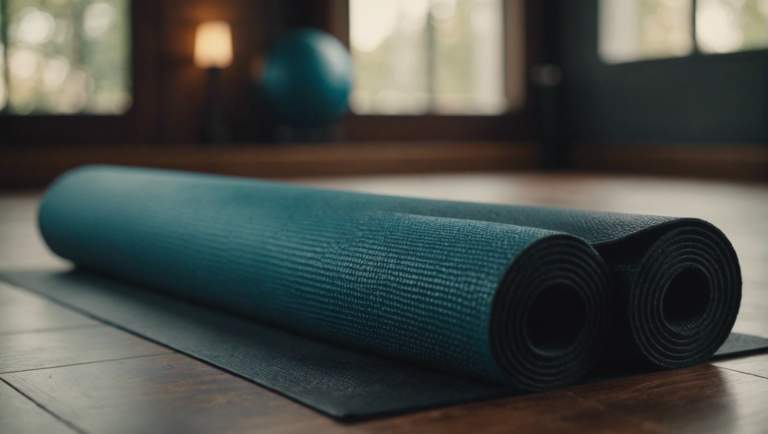Discovering The Best Yoga Practices For Enhanced Flexibility
Discovering the Best Yoga Practices for Enhanced Flexibility
The Vital Role of Yoga in Enhancing Flexibility
Yoga, an age-old practice known for its holistic benefits, holds a special place in the realm of physical wellness, specifically in fostering flexibility. The essence of yoga lies not only in its physical postures but also in the integration of breath work and mindful awareness, crafting a foundation for profound flexibility improvements both on and off the mat. As flexibility is a crucial component of a healthy and functional body, understanding the nuances of how yoga practices can optimize this aspect is invaluable.
Tailoring Yoga Practices to Individual Needs
The beauty of yoga lies in its adaptability to suit individual needs and goals. While the journey toward enhanced flexibility begins with recognizing the body’s current state, it gradually unfolds through the consistent practice of tailored postures. Each individual’s path to flexibility is unique, influenced by factors such as age, lifestyle, and existing physical conditions. Thus, creating a personalized yoga routine, perhaps with the guidance of a knowledgeable instructor, can significantly accelerate progress.
Key Yoga Poses for Flexibility
Certain yoga poses are famously effective for increasing flexibility. Practices such as Pashchimottanasana (Seated Forward Bend) and Uttanasana (Standing Forward Bend) deeply stretch the hamstrings, promoting flexibility in the lower back and legs. Asanas like Anjaneyasana (Low Lunge) and Baddha Konasana (Bound Angle Pose) work marvelously to open the hips and improve the range of motion. poses that focus on the spine, such as Ardha Matsyendrasana (Half Lord of the Fishes Pose) and Bhujangasana (Cobra Pose), can also enhance spinal flexibility, contributing to overall agility and ease in movements.
Overcoming Common Flexibility Hurdles
Common obstacles on the path to increased flexibility include neglecting regular practice and not allowing the body time to adapt. Overcoming these challenges involves building a consistent yoga routine and maintaining patience. It’s also crucial to listen to the body’s signals. Pushing too hard can lead to injuries, setting back progress. Integrating restorative yoga sessions and employing props can make difficult poses more accessible and support the body as it stretches, gently encouraging flexibility without strain.
The Synergy between Breath and Movement
Central to advancing flexibility through yoga is the synergy between breath and movement. The yoga practice encourages deep, conscious breathing, which helps to release tension and facilitate deeper stretches. By focusing on the breath, practitioners can often surpass their perceived limits, discovering enhanced flexibility. The breath acts as a bridge, connecting the mind and body, allowing for a deeper exploration of yoga poses aimed at increasing flexibility.
The Impact of Mindset on Flexibility Goals
Achieving greater flexibility through yoga is as much a mental endeavor as it is physical. Cultivating a mindset of openness and patience is pivotal. Encountering resistance or tightness in the body is part of the journey. Embracing this challenge with a positive attitude and determination can significantly impact one’s progress. Yoga teaches us to be present and to embrace our current limitations while gently pushing boundaries, fostering not only physical flexibility but mental resilience as well.
Fueling the Body for Optimal Flexibility
Beyond the practice itself, nutrition and hydration play essential roles in enhancing flexibility. A diet rich in anti-inflammatory foods and ample hydration can boost muscle elasticity and joint health, directly impacting flexibility. Ensuring the body is well-nourished and hydrated supports the physical demands of yoga and aids in recovery and flexibility gains.
Yoga’s holistic nature, encompassing physical postures, breath work, and mental discipline, offers a comprehensive approach to enhancing flexibility. Tailoring practices to individual needs, focusing on key poses, overcoming hurdles with patience, and understanding the pivotal role of breath, mindset, and nutrition, all contribute to realizing flexibility goals. As practitioners weave these elements together, they unlock their full flexibility potential, moving through life with more ease, grace, and fluidity.
The Role of Consistency and Patience in Improving Flexibility Through Yoga
Embarking on a journey to enhance one’s flexibility through yoga is not merely about adopting a set of physical practices; it is equally about cultivating a mindset anchored in patience and the value of consistent effort. Yoga, with its deep roots in ancient wisdom, offers a holistic approach to improving flexibility, which goes beyond mere physical gains. It encompasses a mental and spiritual upliftment, emphasizing the importance of consistency and patience in witnessing transformative results.
Understanding the Power of Consistency in Yoga Practices
The essence of yoga lies in repetitive practice. Each posture, when practiced regularly, not only works to enhance the body’s flexibility but also teaches the mind the art of patience and persistence. The journey toward increased flexibility is gradual, with each session building upon the previous one, fostering a deeper connection between mind, body, and spirit. This iterative process is crucial for the muscles and connective tissues to safely stretch and strengthen without causing injury.
Consistency in yoga is not merely about frequency but also about maintaining a conscious engagement with each pose. It involves understanding the subtle nuances of body alignment, breath control, and mental focus, which collectively contribute to more effective and fulfilling practice sessions. Over time, consistent practice helps in gradually expanding the body’s range of motion, enhancing flexibility in a sustainable manner.
The Virtue of Patience in Achieving Flexibility Goals
Patience is an indispensable virtue in the quest for improved flexibility through yoga. It is patience that allows individuals to embrace their current physical limitations without judgment, understanding that flexibility is a long-term goal that cannot be rushed. In an era of instant gratification, yoga teaches the valuable lesson that some of the most rewarding achievements require time and steadfast dedication.
Patience in yoga also pertains to listening to one’s body and respecting its limits on any given day. It acknowledges that progress in flexibility is not linear and that there may be days of perceived regression. Such understanding prevents discouragement and keeps practitioners motivated, reinforcing the importance of patience as a companion to consistency in this transformative journey.
Tailoring Yoga Practices for Optimal Flexibility Gains
Selecting the right yoga poses and sequences is critical for targeted flexibility improvement. Poses such as Uttanasana (Standing Forward Bend), Paschimottanasana (Seated Forward Bend), and Adho Mukha Svanasana (Downward-Facing Dog) are renowned for their effectiveness in stretching the hamstrings, spine, and shoulders, respectively. poses that target specific areas of stiffness or tightness can create a customized yoga routine that addresses individual flexibility goals.
Moreover, integrating dynamic movements with static stretching poses enhances the effectiveness of the practice. Dynamic movements improve blood circulation and warm up the muscles, making them more receptive to stretching, while static poses allow for deeper stretches, promoting flexibility in the connective tissues.
Fostering a Supportive Yoga Environment
Creating an environment that supports consistent practice and fosters patience is vital. This includes setting realistic goals, celebrating small victories, and possibly engaging with a community of fellow practitioners who share similar goals. A supportive environment can be immensely beneficial in overcoming obstacles and maintaining the motivation needed for long-term flexibility gains.
Improving flexibility through yoga is a deeply rewarding journey that transcends mere physical benefits, offering profound mental and spiritual growth. The keys to unlocking these benefits are consistency in practice and patience in progress. Together, they form the foundation upon which individuals can build a sustainable, fulfilling yoga practice that not only enhances flexibility but also enriches the overall quality of life.
Top Asanas for Increasing Flexibility and Reducing Stiffness
Embarking on a journey toward greater flexibility and reduced stiffness beckons a disciplined yet gentle approach. Yoga, a millennia-old practice rooted in enhancing physical, mental, and spiritual well-being, offers an accessible path to loosening tight muscles and fostering an expansive range of motion. This exploration delves into specific asanas (yoga poses) that stand out for their efficacy in transforming rigidity into suppleness.
Discovering the Best Yoga Practices for Enhanced Flexibility
Yoga transcends mere physical exercise; it’s a synthesis of mindful movement, breath control, and meditation aimed at harmonious balance. Among its myriad benefits, yoga’s ability to increase flexibility and alleviate stiffness is particularly notable. Flexibility doesn’t merely pertain to the capacity to touch one’s toes or split; it embodies the freedom of movement, reduced risk of injury, and a profound sense of bodily liberation.
Essential Asanas for Flexibility
Tadasana (Mountain Pose)
Though seemingly simple, Tadasana is foundational, instilling an awareness of alignment and posture. It gently prepares the body for more complex stretches, engendering a sense of rootedness and stability.
Adho Mukha Svanasana (Downward-Facing Dog)
A quintessential pose in many yoga sequences, Downward-Facing Dog stretches the shoulders, hamstrings, calves, and hands. It also strengthens the core and improves circulation, serving as a pivotal step towards enhanced flexibility.
Virabhadrasana I (Warrior I)
Warrior I is a dynamic pose that opens up the chest, lungs, and hips, while stretching the arms, legs, and abdomen. It not only boosts flexibility but also fortifies balance and concentration.
Paschimottanasana (Seated Forward Bend)
Ideal for relieving stiffness in the back and legs, Paschimottanasana deeply stretches the spine, shoulders, and hamstrings. This forward bend calms the mind and enhances flexibility in the posterior chain of muscles.
Baddha Konasana (Bound Angle Pose)
Baddha Konasana is particularly beneficial for opening the hips and stretching the inner thighs and knees. It’s a calming pose that also aids in digestion and stimulates the abdominal organs.
Nurturing a Flexible Body and Mind
Yoga’s holistic approach emphasizes gradual progress and mindful practice. It encourages practitioners to listen to their bodies, pushing boundaries gently without succumbing to the temptation of force. The journey towards flexibility is not linear; it waxes and wanes, guided by patience and persistence.
Mindful Breathing: The Key to Easing into Asanas
Breathwork is integral to yoga practice. Deep, conscious breathing helps to soften the body, making it more pliable and receptive to stretches. It also centers the mind, fostering a meditative state conducive to introspection and relaxation.
Consistency Over Intensity
A regular, consistent practice yields more substantial and lasting benefits than sporadic, intense sessions. Dedication to a routine, even if it comprises just a few minutes each day, can significantly advance one’s flexibility and overall well-being.
Warm-Up and Cool-Down: Essential for Safe Practice
Engaging in a gentle warm-up prepares the body for deeper stretches, while a cool-down phase allows the body to assimilate the benefits of the practice. This attentiveness to the body’s needs minimizes the risk of injury.
Listening to Your Body: The Ultimate Guide
Each individual’s body has its unique limitations and capacities. Honoring these, rather than comparing oneself to others, is crucial. Adjusting poses to suit one’s comfort level, using props, or modifying sequences can make yoga practice more enjoyable and effective.
Yoga is not just a series of poses; it’s a path towards understanding and accepting oneself, both physically and mentally. As flexibility improves, so does one’s ability to navigate life’s challenges with grace. The asanas mentioned above are not just exercises in stretching; they are gateways to unlocking the full potential of one’s body and mind. Through consistent practice, mindfulness, and a gentle, patient approach, discovering the best yoga practices for enhanced flexibility can lead to a transformative experience, imbuing everyday life with a sense of ease, flow, and profound freedom.
Integrating Mindfulness and Breathing Techniques into Yoga for Flexibility
The Synergy of Mindfulness and Breathing in Yoga Practice
Yoga, an ancient practice rooted in over 5,000 years of Indian philosophy, has evolved to become a universal language of spiritual exercise across the globe, influencing millions to lead a healthier and more balanced lifestyle. Central to yoga’s effectiveness, especially in promoting flexibility, is the integration of mindfulness and specific breathing techniques. These elements transform yoga from mere physical exercise to a holistic practice that harmonizes the body, mind, and spirit, facilitating a deeper connection and enhanced flexibility.
Unpacking the Role of Mindfulness in Yoga
Mindfulness in yoga serves as the foundation upon which the physical practice builds. It is the conscious awareness of our body, breath, and sensations experienced in the present moment. This focused attention encourages a deeper engagement with each posture or asana, making the practice more deliberate and introspective. When we attune our attention to the present, we become more aware of our body’s needs, limitations, and potentials. This acute awareness prevents injury and guides our bodies gently into deeper stretches and poses, thereby enhancing flexibility.
Breathing Techniques: The Lifeforce of Yoga
Pranayama, or yogic breathing, plays a critical role in yoga practice. These controlled breathing exercises are not only vital for energizing the body but also for centering the mind. The breath acts as a bridge between the body and mind, influencing emotional states and helping to regulate stress responses. When applied to flexibility-focused yoga practices, these breathing techniques facilitate relaxation in the muscles and joints, allowing for greater ease and depth in poses. For instance, deep, rhythmic breathing can help to release tension in tight areas, supporting smoother transitions and increased range of motion.
Practical Strategies for Integration
To reap the benefits of yoga for flexibility, it is crucial to integrate mindfulness and breathing techniques in a harmonious manner. Here are practical strategies for achieving this:
-
Begin Each Session with Mindfulness Meditation: Spend a few minutes at the start of your practice focusing on your breath or engaging in a body-scan meditation. This sets a tone of mindfulness that will pervade your session, making each movement more intentional and aware.
-
Employ Pranayama Before and During Asanas: Utilize breathing exercises such as Ujjayi Pranayama (Victorious Breath) or Nadi Shodhana (Alternate Nostril Breathing) at the beginning of your practice to center your mind and prepare your body. Incorporate mindful breathing throughout your asanas to maintain a calm, focused state, allowing your body to stretch and bend with greater fluidity.
-
Focus On the Journey, Not the Destination: Rather than striving to achieve perfect poses, center your practice around the experience of getting there. Pay attention to the sensations and emotions that arise with each movement, using them as cues to guide your practice.
-
Integrate Mindful Transitions: Move mindfully between poses, maintaining an awareness of your breath and bodily sensations. This not only enhances flexibility by engaging and stretching the muscles more effectively but also imbues your practice with a seamless, meditative quality.
Cultivating a Personal Practice
Developing a personal yoga practice that effectively integrates mindfulness and breathing techniques for enhanced flexibility requires patience, experimentation, and consistency. Embark on this journey with an open heart and a curious mind, allowing your practice to evolve as you gain deeper insights into the interplay of body, breath, and mindful awareness. Remember, the ultimate goal of yoga transcends physical flexibility; it is about fostering a deeper connection with the self and the universe at large. Through the mindful integration of breathing and mindfulness techniques, yoga offers a path to holistic health, emotional balance, and spiritual awakening.
The Impact of Lifestyle Choices on Yoga Practice and Flexibility Improvement
The Vital Role of Diet in Yoga and Flexibility Enhancement
The journey towards achieving greater flexibility through yoga is significantly influenced by dietary choices. A diet rich in anti-inflammatory foods like leafy greens, berries, and omega-3 fatty acids can enhance muscle recovery and reduce stiffness. Adequate hydration is also crucial; water lubricates the joints and facilitates the smooth performance of poses. Furthermore, incorporating foods high in magnesium, such as nuts and seeds, assists in relaxing the muscles, thereby promoting greater flexibility. Understanding the interconnection between what we consume and how our bodies perform during yoga practices unveils a pathway towards optimizing flexibility.
Sleep’s Undeniable Influence on Yoga Performance
Sleep, often overlooked, plays a pivotal role in the recovery and performance of yogic practices. During sleep, the body undergoes repair and recovery processes that are critical for muscle and tissue healing. A lack of proper rest can lead to increased fatigue and reduced motivation, both of which are detrimental to flexibility goals. Establishing a consistent sleep schedule that allows for 7-9 hours of quality sleep can significantly enhance the body’s ability to extend and stretch, impacting yoga performance positively. Highlighting the importance of sleep underpins the necessity of a holistic approach to improve flexibility through yoga.
The Impact of Hydration on Enhancing Flexibility
Hydration is not just about quenching thirst; it’s a cornerstone for increasing flexibility. Water keeps the connective tissue and joints adequately lubricated, facilitating easier and more comfortable movements during yoga practices. Dehydration can lead to muscle tightness and increased risk of injuries, drastically impeding flexibility improvements. Consuming adequate amounts of water daily, especially before and after yoga sessions, can ensure that the body remains supple and primed for stretching. Recognizing hydration as a critical element underscores the comprehensive strategy required for advancing in yoga and achieving desired flexibility levels.
Stress Management: A Key to Unlocking Flexibility through Yoga
Stress exerts a considerable impact on one’s yoga practices and overall flexibility. Under stress, the body’s natural response is to tighten and contract muscles, directly opposing the goals of yoga. By employing stress management techniques such as meditation, deep breathing exercises, and mindfulness practices, individuals can significantly reduce physical tension. This relaxation of the body’s muscles and tissues directly translates into improved flexibility and a more profound, rewarding yoga experience. Emphasizing stress management as a companion to yoga practices reinforces the multi-faceted approach necessary for enhancing flexibility.
The Influence of Regular Practice on Yoga and Flexibility
Consistency in yoga practice is arguably the most crucial factor for improving flexibility. A regular, dedicated yoga routine allows the body to gradually adapt, extend, and maintain increased flexibility over time. Moreover, integrating a variety of yoga styles addresses different muscle groups and promotes overall body flexibility. Patience and persistence in practice, without pushing the body beyond its limits, fosters a steady progression towards achieving flexibility goals. By highlighting the significance of consistent practice, the essential role of dedication and perseverance in the pursuit of enhanced flexibility through yoga is underscored.
Closing Thoughts
This comprehensive discussion underscores the profound impact of lifestyle choices on yoga practices and the quest for improved flexibility. Diet, sleep, hydration, stress management, and regular practice are not just supportive elements but are foundational to the yoga journey. Each aspect intertwines with the next, creating a holistic approach that fosters an environment where flexibility can flourish. As individuals embark on or continue their yoga journey, embracing these lifestyle elements can lead to more significant improvements, not just in flexibility but in overall wellbeing. The essence of yoga as a practice for both the mind and body is beautifully reflected in how these aspects of lifestyle enhance one’s capabilities and experiences.
Conclusion
Embarking on the journey of enhancing flexibility through yoga marks a transformative chapter in personal health and wellness. The mastery of yoga asanas, coupled with the unwavering dedication to practice, unveils an avenue for individuals to cultivate a deeper connection with their bodies, fostering resilience and grace in movement that transcends the yoga mat.
The exploration of the best yoga practices for improved flexibility is not merely about adopting a new physical regimen; it’s about embracing a holistic approach to well-being. This exploration underscores the importance of yoga not just as a series of postures but as a comprehensive lifestyle that aligns the body, mind, and spirit. It becomes evident that flexibility is not solely a physical attribute but a manifestation of inner harmony and balance.
At the core of this journey lies the significance of consistency and patience. The growth towards enhanced flexibility through yoga is incremental, requiring perseverance and a compassionate attitude towards oneself. This steady progression underscores the resilience of the human spirit and its capacity for transformation. The consistent practice of yoga serves as a gentle reminder that growth occurs not in leaps and bounds but in the quiet persistence of daily effort.
The introduction of top asanas specifically curated to increase flexibility and alleviate stiffness provides a practical roadmap for individuals seeking to enhance their physical capabilities. These postures, ranging from the grace of the Pigeon Pose to the grounding expansiveness of the Warrior series, offer a diverse palette of movements that target different areas of the body. Each asana, with its unique benefits, acts as a building block towards achieving a more limber and supple physique.
Moreover, the integration of mindfulness and breathing techniques into the yoga practice elevates the experience from a mere physical exercise to a profound meditation in motion. This integration is crucial in breaking through the barriers that limit flexibility, as it encourages a deeper release of tension and fosters an environment for healing and rejuvenation. Mindfulness in yoga practice ensures that the pursuit of flexibility transcends the physical realm, touching the shores of mental and emotional well-being.
The narrative of flexibility improvement is also deeply intertwined with lifestyle choices. The journey towards enhanced flexibility through yoga draws attention to the significance of nourishment, rest, and self-care. It becomes apparent that the habits cultivated off the yoga mat play a pivotal role in the progress made on it. A lifestyle that supports the yoga practice, characterized by balanced nutrition, adequate hydration, and quality rest, lays the foundation for a body that is more receptive to growth and healing.
As this comprehensive guide unfolds, the journey towards discovering the best yoga practices for enhanced flexibility reveals itself as a multifaceted exploration. It is an expedition that challenges individuals to look beyond the confines of physical limitations, inviting them to embark on a path of self-discovery and growth. Through the dedication to consistent practice, the integration of mindfulness, and the embrace of supportive lifestyle choices, individuals are equipped with the tools to transcend stiffness and embrace a state of fluidity and ease.
This journey, woven through the fabric of patience, practice, and mindful living, illuminates the transformative power of yoga. It underscores the philosophy that true flexibility is not just about the ability to touch one’s toes but about moving through life’s challenges with grace, resilience, and an open heart. It is a testament to the idea that through the act of bending, we indeed find our strength, and in the art of yielding, we discover our true capacity for growth and transformation.



